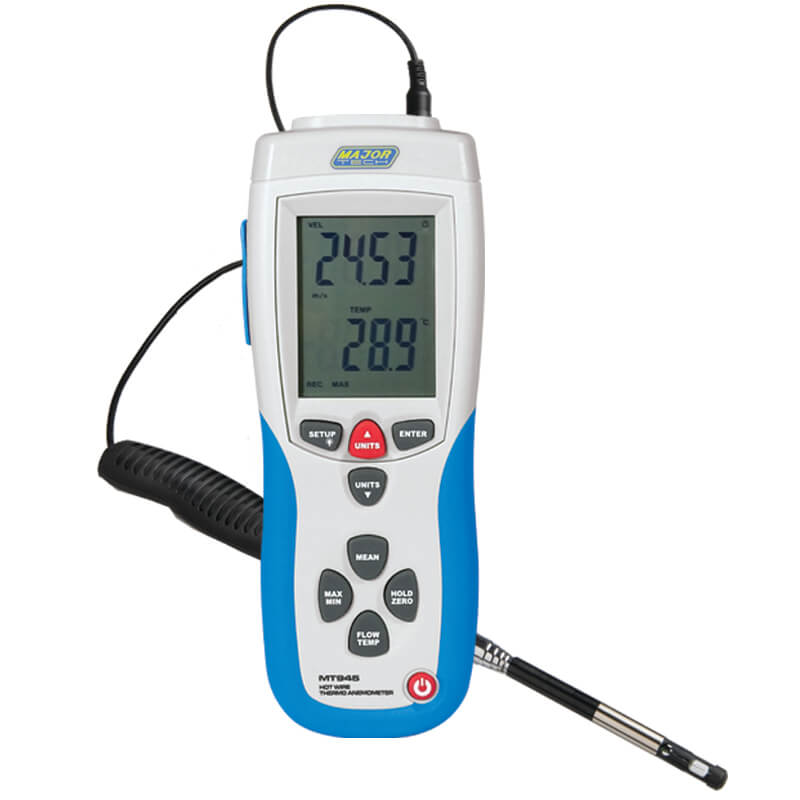Anemometers Revealed: Comprehending Their Importance in Environmental Monitoring and Safety Procedures
The function of anemometers in ecological surveillance and precaution is often underestimated, yet their value is obvious. These instruments have a lengthy background rooted in clinical query and technological developments, developing to come to be vital tools in different fields. From weather forecasting to aeronautics security, anemometers play an essential role in offering precise data that educates decision-making processes and boosts overall safety. Comprehending the ins and outs of anemometers reveals a globe of crucial insights that are essential to our understanding of the environment and the steps we require to make certain safety.
Background of Anemometers
The development of anemometers can be traced back to the old worlds where primary wind measuring devices were very first utilized. These very early wind dimension tools laid the foundation for the advancement of more innovative anemometers over time. One of the earliest known anemometers was the hemispherical cup anemometer invented by Leon Battista Alberti in the 15th century. This style was composed of 4 hemispherical cups that gathered wind power, offering a dimension of its intensity based on the rate of rotation.
Over the years, developments in technology led to the growth of even more modern anemometers, including ultrasonic anemometers and laser Doppler anemometers, offering enhanced accuracy and efficiency in gauging wind speed and direction. The history of anemometers showcases an amazing journey of technology and progression in the field of meteorology.
Sorts Of Anemometers
Throughout the area of weather forecasting, different types of anemometers have been established to accurately measure wind speed and instructions. Sonic anemometers make use of ultrasonic signals to determine wind speed and direction precisely. Hot-wire anemometers run based on the concept that the cooling effect of wind on a heated cable is symmetrical to the wind rate.
Applications in Weather Forecasting
Having discussed the different kinds of anemometers made use of in meteorology for gauging wind speed and direction, it is necessary to explore their useful applications in the field. Anemometers play a crucial duty in weather forecasting by supplying precise and real-time data on wind problems (anemometer). Meteorologists utilize anemometers to check wind speed and instructions to anticipate weather patterns, concern warnings for severe weather events like storms, hurricanes, and storms, and examine weather for air travel safety
In weather forecasting, anemometers help in understanding local and local wind patterns, which are crucial for forecasting weather condition modifications and identifying climatic trends. These devices are additionally utilized in research to research microclimates, city heat islands, and air pollution dispersion. In addition, anemometers are used in farming to enhance plant management practices, such as watering and pesticide application, based on wind problems.
Relevance in Aeronautics Security
An indispensable element of guaranteeing aviation security hinges on the precise tracking of wind conditions utilizing anemometers. Anemometers play a critical role in aviation by supplying real-time data on wind speed and instructions, aiding pilots in making educated decisions throughout trip, take-off, and landing. Unpredictable and strong winds can significantly affect aircraft operations, making it essential for air travel authorities to depend on precise wind measurements to ensure the safety and security of travelers and team.

In the dynamic atmosphere of aviation, where also minor adjustments in wind rate and direction can have extensive effects, anemometers stand as vital devices for advertising protected and secure flight.
Function in Environmental Study
Anemometers play an essential duty in ecological research by see post providing vital information on wind speed and instructions. By properly gauging wind characteristics, anemometers assist researchers evaluate the activity of pollutants in the air, evaluate the influence of commercial discharges, and anticipate the spread of pollutants in the atmosphere.


Conclusion
In conclusion, anemometers have actually played a crucial visit this web-site duty in environmental surveillance and security measures. Comprehending the value of anemometers is crucial for precisely gauging wind speed and instructions, which is vital for forecasting weather condition patterns, guaranteeing secure air travel procedures, and carrying out ecological studies.
One of the earliest recognized anemometers was the hemispherical cup anemometer developed by Leon Battista Alberti in the 15th century. Over the years, developments in modern technology led to the development of more modern-day anemometers, including ultrasonic anemometers and laser Doppler anemometers, using increased precision and performance in measuring wind speed and instructions. Hot-wire anemometers operate based on the concept that the cooling effect of wind on a warmed cord is proportional to the wind rate. Meteorologists make use of anemometers to keep an eye on wind rate and direction to forecast weather patterns, concern warnings for severe weather condition occasions like hurricanes, cyclones, and storms, and evaluate climatic problems for air travel safety.
Understanding the importance of anemometers is important for accurately measuring wind rate and direction, which is vital for predicting weather condition patterns, making sure secure aeronautics operations, and conducting environmental studies. (anemometer)